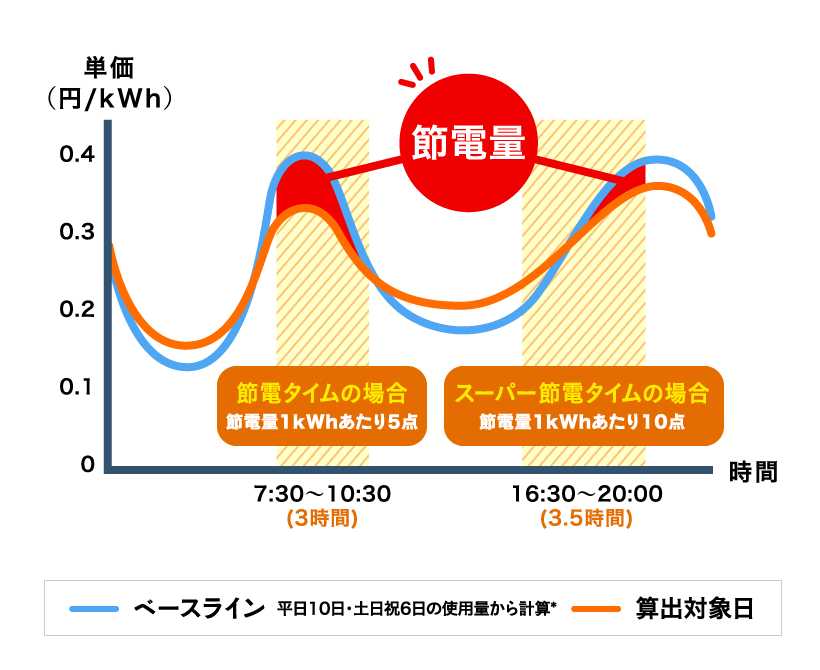TOKYO, 21 December 2018 – Energy technology startup SMAP Energy is proud to announce the continuation of a fruitful collaboration with Japanese energy retailer Looop in the newly launched Winter Demand Response (DR) Savings campaign. This follows the successful result of the Looop Summer TOU trial.
DR vs TOU – Seizing a second opportunity
As demonstrated in the summer trial, strategically crafted TOU plans can deliver great outcomes in terms of peak demand reduction and customer savings. However, these plans will require fixing a specific window and rate for savings, which may not be ideal for addressing price fluctuations in the short-term (i.e. 1-2 days notice).
The Winter Demand Response (DR) campaign will feature some adjustments to tie rewards to short-term behavioural adjustments in response to price signals. Instead of pre-defining windows for peak-time, Looop will send participants evening notifications of when the next day’s peak periods will occur. SMAP Energy will assist in this program by leveraging a suite of digital engagement tools and its proprietary AI-driven technology to predict customer behavioural response – both tested in the previous Summer trial.
How it works
Looop’s existing – or newly acquired – energy customers in the Tokyo area can opt in to the program before 26 December. The program will run from 15 January to 22 February and progress updates will be provided daily.
Participation in the campaign will be tracked by observing energy consumption changes in each participant’s smart-meter data. A baseline of energy consumption will be established based on the ten days prior to each event. Unlike the summer TOU program, the base rates will not change and there is no downside for participation.
As with the summer TOU trial, participants will earn points for reducing energy consumption in the designated peak periods. Rather than keeping set peak periods throughout the trial, Looop will designate windows that can occur any time from 6:00-22:00 with participants being given notice of the windows where points can be earned in the prior evening. These points will also have a direct commercial value, as they can be redeemed at the end of the program for an Amazon gift certificate tied to the value of the points they earn at a rate of 1 JPY (approx. 1p)/point (minimum reward of 50 JPY will apply).
 Sample schedule showing designated peak periods
Sample schedule showing designated peak periodsAnother difference from the summer TOU trial is that the Winter Demand Response campaign will offer multiple tiers of peak periods. Previously, participants earned points for peak-time energy reduction at a fixed rate of 1 point/kWh of peak-time energy consumption reduction. The new version of the program allows for the designation of “super” savings times, where points are accrued at twice the normal rate.
Points can be tracked daily via the Looop customer online portal, and SMAP Energy will provide data visualisation and engagement tools to facilitate this.
Why is Demand Response important?
The intended outcome for the trial is to present a tech package to enable suppliers to cost-effectively mitigate imbalance charges driven by short-term price fluctuations outside of their control and pass the savings on to the participating customers. As such, this campaign is being technically classified as a demand response trial based on its focus for utilising untapped capacity from domestic customer behaviour.
Deep Dive -What is energy imbalance?
Energy retailers need to predict how much energy their customers will use in a given period and make sure they have bought enough energy to cover this prediction. They submit their predictions at a “gate closure” time (in the UK, this is one hour before the start of a period).
However, these predictions won’t be 100% accurate for a variety of reasons (prediction models can be outdated, energy consumption can change unpredictably, etc.). Imbalance volume is the difference between the expected energy consumption in a given period and the actual energy consumption ultimately recorded.
The energy retailer will either “buy” or “sell” the imbalance volume – depending on whether their customers used more or less than the predicted amount – from the grid at a specified rate. This rate is more expensive than buying on the market in advance, so it is important that their predictions be as accurate as possible to prevent waste.
For more information, read about imbalance pricing here.
Combining both the SMAP TOU and DR tech packages would present a compelling solution for energy retailers to pass additional savings on to their customers with no adverse requirements for data collection or additional hardware installation beyond a standard smart-meter. It would also likely have positive implications for customer acquisition, engagement, and retention, while allowing suppliers to diversify their offer in a competitive retail market. Domestic demand response is something SMAP Energy identified at the founding of the company as an underutilised opportunity (read SMAP Energy Co-founder Paul Monroe’s 2016 article describing the background of this here).
Find out more
If you want to know more about this project, further information can be obtained by contacting the SMAP Energy team at info@smapenergy.com.

